Healthcare facilities need proactive security to improve patient care, protect people and assets, and streamline operations
Hospitals and healthcare facilities have the tall order to manage stressful situations from a high number of emergency services, staff, patients, and visitors.

Healthcare facilities safety & security
Ensuring a safe environment for patients, staff, and visitors is a key priority for all healthcare facilities. Security teams must remain informed to stay ahead of disruptions to ensure all essential operations remain functional. Medical staff require the right tools to deliver patient care effectively while ensuring a safe and secure environment.
Security solutions like IP cameras and IP intercoms have long been central to healthcare facilities' security landscape. These technologies have been instrumental in delivering reactive security strategies. They have assisted security and medical teams in taking quick actions. In a hospital environment where lives are at stake, security technologies must transform from reactive to proactive. This shift is necessary to stay ahead of security violations that could endanger staff and patients' lives.
Access control allows a team to restrict entry points to areas like medicine storage rooms and operation theaters. However, it doesn’t always provide real-time information. Video surveillance allows security teams to see and detect, but it has its limits when used alone. It provides an incomplete view of a situation and lacks interactivity to diffuse the scene. Audio brings those two elements together and creates a well-rounded, interactive solution. It provides information and actionable insight to improve patient care and secure people and hospital assets. Additionally, it helps streamline hospital operations.
Improving patient care in healthcare facilities
Improving patient care is the utmost priority for medical staff and security teams. Audio solutions uncover new ways to automate the workflow with interactive communication. This leads to better care of the patient so that hospital staff can effectively care for more patients.
IP video intercoms in patient rooms for the mentally challenged provide increased situational awareness. This allows medical staff or control operators to see what’s happening in real-time. They can also hear and speak in real-time, helping to reduce response time. Additionally, smart analytics technologies like sound detection and scream alarms are beneficial. An IP intercom can proactively alert medical staff without the patient needing to press a button.
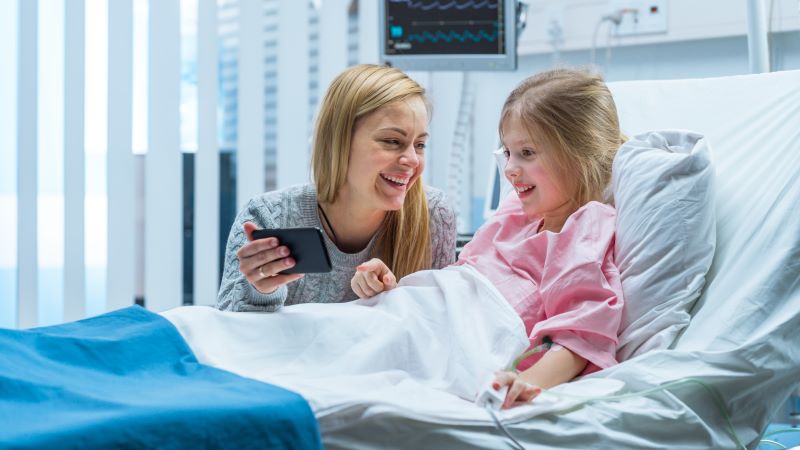
In other cases, when a patient reaches out for help by pressing the intercom or existing nurse call button, staff can reach out to them remotely using the Intercom to vet the situation before sending medical staff to the patient ward.
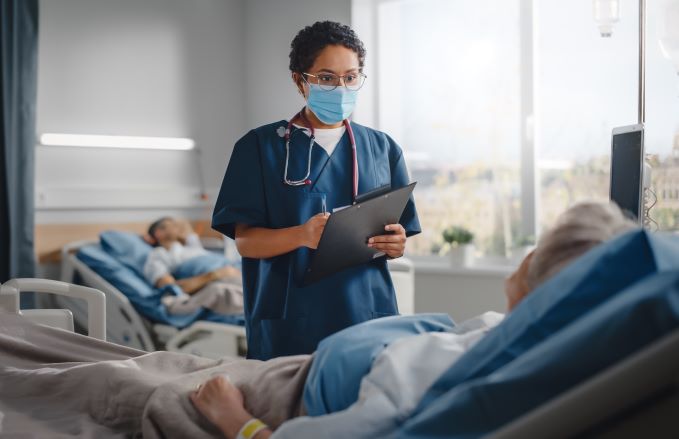
This helps identify any false alarms or accidental presses, optimizing medical staff resources.
According to a 2023 study by Intensive and Critical Care Nursing, video visitation increases satisfaction among intensive care unit patients and their families. This is especially true for critically ill patients, where visitation is highly restricted.
An IP intercom in the intensive care unit can connect patients with their family members through intelligible two-way communication, helping family members feel connected. Increasingly, users benefit from intercom solutions that provide both audio and HD video, allowing family members to both hear and see the patient remotely.
Securing people and hospital assets
It is impossible to deliver the needed patient care with- out a safe and secure environment to work. An integrated security system helps security teams to take proactive measures that protect staff, patients, and valuable assets. This allows medical teams to focus on treating patients and saving lives.
According to a 2016 GAO study, rates of violence against healthcare workers are 12 times higher than rates for the overall U.S. workforce. From verbal abuse to physical assaults, healthcare workers face threats daily while providing care for their patients.
Video technologies work together with audio analytics to help security teams detect any verbal abuse from patients and visitors. With IP speakers and intercoms in communal areas and patient wards, security staff can proactively and remotely intervene in such situations. This prevents incidents from escalating to physical aggression. An IP video intercom, which incorporates video with audio, provides many benefits to a security team and its risk mitigation efforts.
For example, an IP video intercom provides an additional and higher level of security by giving security more control. It also provides intel on who can enter a restricted area in the hospital.
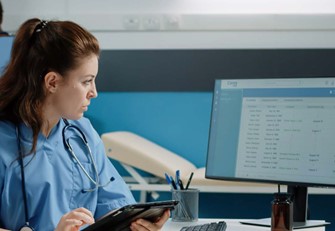
Hearing who is there is helpful, but seeing who is there is better. It prevents spoofing, where someone pretends to be someone they are not. Video verification ensures the individual's photo on their ID card matches who is on the video screen, enhancing security.
Beyond security, audio is crucial in delivering critical communication solutions. For example, in a fire emergency, a voice-based evacuation system, or Public Address and Voice Alarm system, certified for EN54-16, allows security teams to deliver voice messages and alerts for life-critical situations.
Streamlining hospital operations
Imagine an emergency entrance blocked by a delivery vehicle while an ambulance with a critically ill patient approaches. This causes unnecessary delays, resource waste, and frustration among staff and patients. Audio can play a crucial role in proactively preventing such situations.
While video provides a real-time view of critical areas, it doesn’t enable the security team to act on what they see. Thanks to open standards like ONVIF and SIP, an IP speaker can automatically dispatch recorded warning messages as soon as video analytics detect an obstruction.
For scenarios requiring manual intervention, such as a helicopter landing on the helipad, the security operator can send live voice messages through the IP speaker using a video management terminal. The built-in microphone of an IP speaker allows ambient listening around the helipad and ambulance entryway. This empowers security personnel to hear what they see in real time and is also useful for future training.
Audio’s benefits extend beyond the emergency entryway in a hospital. Integrated with video management and access control systems, audio can assist in streamlining daily operations throughout the hospital.
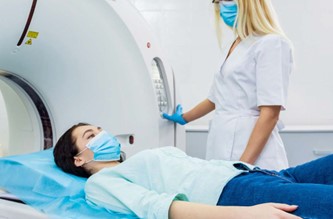
Within operating theatres, intensive care wards, and treatment rooms, an IP cleanroom intercom helps nurses and surgeons get immediate help during surgery.
By connecting to a foot switch, an IP cleanroom intercom can dispatch pre-recorded messages to IP speakers in other staff areas. This saves precious time, as medical staff do not need to remove gloves or wash hands to seek additional help.
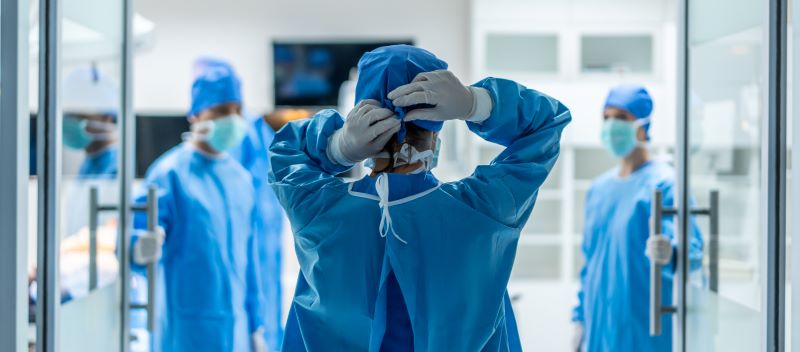
IP cleanroom intercoms are easy to clean, can withstand most chemicals, and are resistant to bacteria and other contagions. They can also be used in isolation rooms to allow quarantined patients to communicate with staff while enabling efficient disinfection.
The healthcare use cases highlighted in this article underscore the critical role audio communication plays in transforming the healthcare landscape. Without a doubt, audio provides a critical piece to any security solution.
The convergence of diverse critical communication technologies, including intercoms, IP speakers, and public address and voice alarm systems, are coming together as Unified Critical Communication solutions. We strongly believe that the healthcare sector will increasingly rely on a single Unified Critical Communications platform. This platform will be fully integrated with other security systems like Video Management and Surveillance, Access Control, and Building Management Systems.
Integrating audio into any security solution opens up the possibility to communicate effectively. It ensures that everyone has the chance to hear, be heard, and be understood, everywhere and every time.
